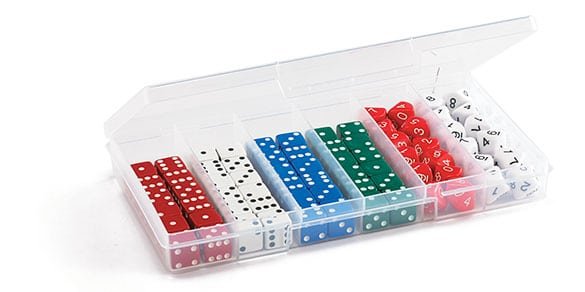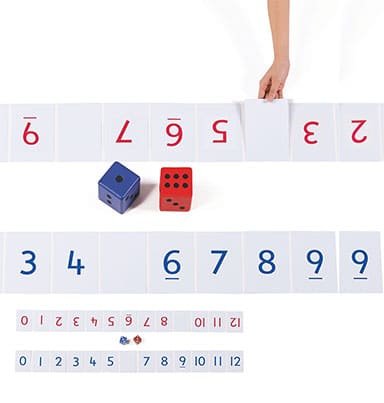• Number
• Probability

Dice are a key manipulative that need to be in every classroom. A dice, much like a spinner, is simply a random number generator. A six-sided (faced) dice could aptly be described as a ‘hexahedral random number generator’. The ten-faced dice is not a platonic solid, but it is ideal for generating the digits 0 – 9 that are used in the base-ten number system and therefore should be part of any classroom dice kit.
Dice Videos

Mathematical Language
• Tetrahedron (4 faces)
• Hexahedron (6 faces)
• Octahedron (8 faces)
• Do-decahedron (12 faces)
• Icosahedron (20 faces)
The ten-faced dice is an example of a decahedron but is not a platonic solid. (Deca meaning ten.)
Using Dice
Dice are used in games or probability experiments to generate numbers.
Typical Classroom Requirements

Most classroom activities will involve the use of six-faced and ten-faced dice. Therefore they form the basis of any dice kit.
Dice often go missing in a classroom setting so it is recommended that they are packed into a box so that when they are returned the teacher may easily check to see that all of the dice are there.
class set:
• You will need at least one six-faced dice per student.
Specialized Dice
As mentioned previously, there are literally hundreds of different dice. An example of specialized dice are place value dice. Different items have been printed on to the faces. Dice have been placed inside dice. There are 24, 30 faced and even 100 faced versions.


Support and Complementary Materials
Large dice allow for a game to be demonstrated and played with a whole class and then desk size versions of the game can be played in small groups or pairs. Turn the Tile is an example of this.

